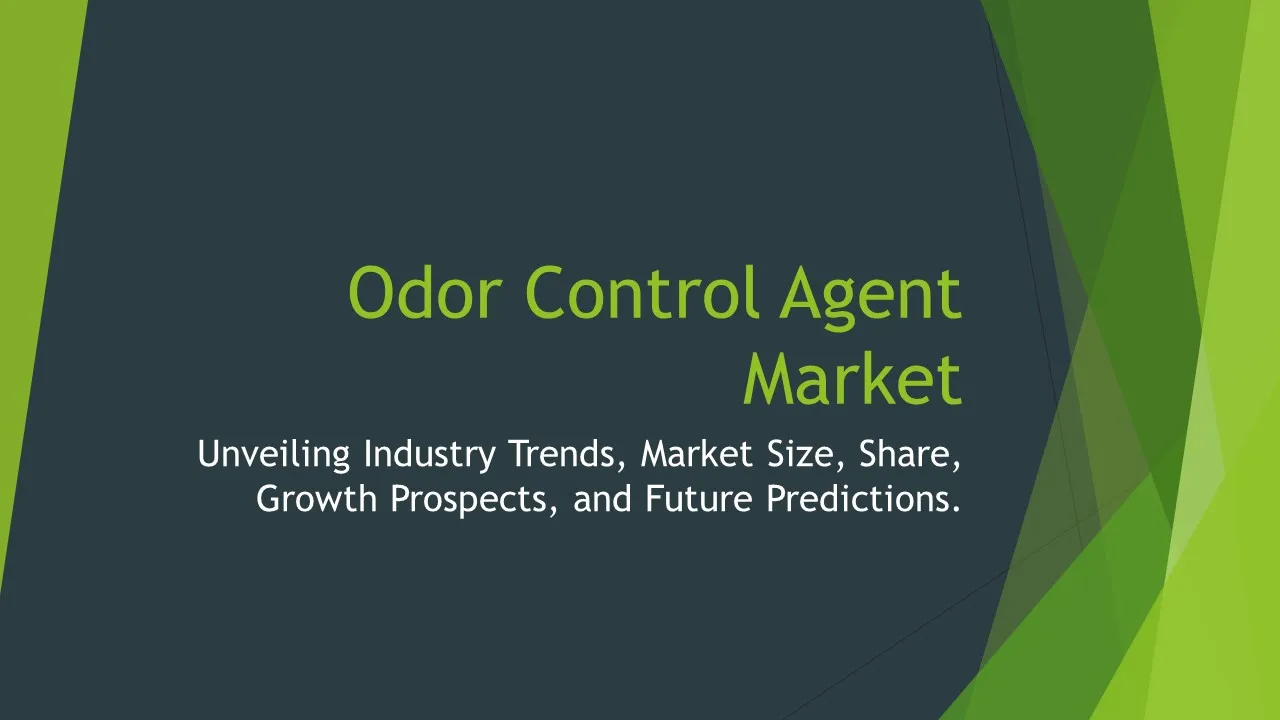High Pressure Laminate HPL Sales
High Pressure Laminate HPL Market Segments - by Product Type (Horizontal Grade HPL, Vertical Grade HPL, Postforming Grade HPL, Antistatic Grade HPL, Fire-Rated Grade HPL), Application (Commercial Spaces, Residential Spaces, Industrial Spaces, Institutional Spaces, Healthcare Spaces), Distribution Channel (Direct Sales, Distributors/Wholesalers, Online Retailers, Specialty Stores, DIY Stores), Region (North America, Europe, Asia Pacific, Latin America, Middle East & Africa) - Global Industry Analysis, Growth, Share, Size, Trends, and Forecast 2025-2035
- Report Preview
- Table Of Content
- Segments
- Methodology
High Pressure Laminate HPL Sales Market Outlook
The global High Pressure Laminate (HPL) market is poised to reach approximately USD 12 billion by 2035, growing at a compound annual growth rate (CAGR) of around 5.5% during the forecast period from 2025 to 2035. The increasing demand for lightweight and durable materials in construction and interior design is driving HPL's adoption across various sectors. Additionally, a notable trend toward sustainable building materials and eco-friendly manufacturing processes is further propelling the market growth. Factors such as rising disposable income in developing regions and the growing popularity of modular furniture are also contributing to the market's expansion. Consequently, the HPL market is expected to see significant growth opportunities and innovations in product offerings over the coming years.
Growth Factor of the Market
The growth of the High Pressure Laminate (HPL) market can be attributed to several key factors. Firstly, the burgeoning construction industry, particularly in developing economies, is creating a substantial demand for HPL due to its aesthetic appeal and durability. Furthermore, the expanding real estate sector, driven by urbanization and the need for efficient space utilization, has increased the requirement for innovative interior surface solutions like HPL. Secondly, the increasing awareness regarding hygiene and cleanliness, especially in healthcare and institutional settings, has led to a preference for materials that can withstand wear and tear while being easy to clean. Thirdly, technological advancements in manufacturing processes have resulted in the production of HPL with enhanced properties, such as fire resistance and anti-static features, making them suitable for a broader range of applications. Moreover, the growing trend of sustainable construction practices is encouraging manufacturers to innovate eco-friendly HPL products, further boosting market growth.
Key Highlights of the Market
- Projected market size of USD 12 billion by 2035 with a CAGR of 5.5%.
- High demand in sectors such as commercial, residential, and healthcare spaces.
- Technological innovations leading to enhanced product features.
- Increasing focus on sustainable and eco-friendly materials.
- Urbanization and real estate growth driving market expansion.
By Product Type
Horizontal Grade HPL:
Horizontal Grade HPL is primarily used for surfaces that require durability and aesthetic appeal, such as countertops, tabletops, and furniture surfaces. This type of laminate is designed to withstand heavy use, making it ideal for both residential and commercial applications. Its resistance to scratches, stains, and heat enhances its functionality, ensuring a long-lasting appearance. Additionally, Horizontal Grade HPL is available in a wide variety of colors and finishes, allowing designers and homeowners to create customized looks that fit various interior styles. As a result, the growing trend toward personalized interior design is expected to boost the demand for Horizontal Grade HPL significantly.
Vertical Grade HPL:
Vertical Grade HPL is specifically designed for vertical applications, such as wall panels, cabinetry, and decorative surfaces. It is generally thinner than Horizontal Grade HPL, which makes it easier to install on vertical surfaces without compromising on appearance or durability. Vertical Grade HPL offers excellent resistance to impact and scratches, making it suitable for high-traffic areas. The increasing demand for stylish wall coverings in both residential and commercial settings is anticipated to drive the growth of this segment. Designers are increasingly opting for Vertical Grade HPL due to its versatility in design and finish options, allowing for creative and modern aesthetics in interiors.
Postforming Grade HPL:
Postforming Grade HPL is known for its ability to be shaped around edges and curves without compromising its integrity, making it an excellent choice for countertops and custom furniture. This type of laminate is produced in a manner that allows it to be manipulated post-production, resulting in seamless edges that enhance the overall look of installations. The growth of the kitchen and bath remodeling sectors is a significant driver for this segment, as homeowners seek materials that provide both functionality and a high-end appearance. Moreover, the increasing trend of open-concept spaces has led to an uptick in demand for Postforming Grade HPL for seamless kitchen islands and unique cabinetry solutions.
Antistatic Grade HPL:
Antistatic Grade HPL is engineered to reduce static electricity buildup, making it particularly suitable for environments such as laboratories, clean rooms, and electronic manufacturing facilities. This specialty laminate is essential for preventing dust accumulation and ensuring safe operation in sensitive environments. As industries continue to prioritize safety and cleanliness, the demand for Antistatic Grade HPL is expected to grow significantly. Furthermore, its aesthetic appeal and durability make it a viable option for various applications beyond industrial use, including educational and healthcare facilities where cleanliness is paramount.
Fire-Rated Grade HPL:
Fire-Rated Grade HPL is developed to meet specific fire safety regulations, making it essential for applications in commercial and public buildings where fire resistance is critical. This type of laminate is designed to withstand flames and prevent the spread of fire, ensuring compliance with safety standards. The increasing focus on fire safety in building design is driving the demand for Fire-Rated Grade HPL, particularly in sectors like healthcare, education, and hospitality. As regulatory requirements become more stringent, manufacturers are innovating to create HPL products that not only meet but exceed these standards, further contributing to market growth.
By Application
Commercial Spaces:
The use of High Pressure Laminate in commercial spaces has seen significant growth due to its durability and design versatility. HPL is commonly applied in offices, retail environments, and hospitality settings, where aesthetics and functionality are paramount. The ability to customize HPL in various colors and finishes enables businesses to create unique and inviting atmospheres for customers and employees alike. Additionally, the scratch and stain-resistant properties of HPL make it ideal for high-traffic areas, ensuring longevity and reducing maintenance costs. As companies continue to invest in appealing workspaces and customer-centric designs, the demand for HPL in commercial applications is expected to rise.
Residential Spaces:
High Pressure Laminate is increasingly popular in residential spaces due to its affordability and aesthetic appeal. Homeowners use HPL for cabinets, countertops, and wall panels, capitalizing on its ability to mimic the look of natural materials like wood and stone without the associated costs. The growth of DIY home improvement projects has further propelled the demand for HPL, as consumers seek accessible materials that are easy to install. Furthermore, the trend toward modern, minimalist designs has led to an increased interest in HPL products that offer sleek, clean lines and a high-end appearance. As more homeowners prioritize stylish and functional living spaces, the residential HPL market is expected to expand significantly.
Industrial Spaces:
In industrial applications, High Pressure Laminate is utilized for surfaces that require robust and durable materials to withstand harsh conditions. HPL is often used in manufacturing facilities, warehouses, and transportation environments, where its resistance to chemicals, impact, and wear is essential. The growth of industrial sectors in emerging economies is fueling the demand for durable surface materials, including HPL. Furthermore, the trend towards creating safer and more efficient workspaces is driving the adoption of HPL, as its easy-to-clean surfaces help maintain hygienic conditions in industrial settings.
Institutional Spaces:
Institutional spaces, including schools, universities, and government buildings, are increasingly adopting High Pressure Laminate for their durability and design options. HPL is used in classrooms, lecture halls, and administrative offices, where it provides a practical solution that can withstand heavy use while maintaining an appealing appearance. The focus on enhancing learning environments through improved design is a key driver for HPL's use in educational institutions. Additionally, the need for low-maintenance, long-lasting materials is crucial in government buildings, where budget constraints often dictate the need for cost-effective solutions. As educational institutions and governmental bodies prioritize modernized spaces, the demand for HPL in institutional applications is poised for growth.
Healthcare Spaces:
The healthcare sector is increasingly recognizing the benefits of High Pressure Laminate due to its hygienic properties and durability. HPL is frequently used in hospitals, clinics, and laboratories, where cleanliness and sanitation are paramount. Its resistance to moisture, stains, and easy-to-clean surfaces make HPL an ideal choice for environments that require stringent hygiene standards. Furthermore, the growing trend of hospital design focusing on patient experience and comfort is fueling the demand for aesthetically pleasing and functional HPL applications. As healthcare facilities continue to evolve and expand, the need for reliable and safe materials like HPL is expected to increase significantly.
By Distribution Channel
Direct Sales:
Direct sales serve as a significant distribution channel for High Pressure Laminate products, allowing manufacturers to establish direct relationships with customers. This distribution model enables manufacturers to provide customized solutions tailored to specific client needs, ensuring that clients receive products that meet their exact specifications. Direct sales also facilitate better pricing strategies and allow for direct feedback mechanisms from customers, which can lead to improved product offerings. As businesses increasingly recognize the benefits of direct engagement with manufacturers, the demand for HPL through direct sales channels is anticipated to grow.
Distributors/Wholesalers:
Distributors and wholesalers play a critical role in the HPL market by providing a broad network for the distribution of products across various geographical regions. These channels often carry a wide range of HPL products from different manufacturers, allowing customers to find a variety of options in one place. The convenience and accessibility offered by distributors and wholesalers make them a popular choice for contractors and builders who require bulk orders for construction projects. As more construction projects arise, the importance of distributors and wholesalers in the HPL supply chain will continue to increase, driving market growth.
Online Retailers:
The rise of e-commerce has significantly transformed the distribution of High Pressure Laminate, with online retailers becoming an increasingly popular channel for purchasing HPL products. Online platforms offer customers the convenience of browsing and comparing a wide range of HPL products from the comfort of their homes. The ability to easily access detailed product descriptions, customer reviews, and competitive pricing has made online shopping appealing to both individual consumers and businesses. Furthermore, the ongoing shift towards digital purchasing in various industries, accelerated by the COVID-19 pandemic, is expected to drive the growth of HPL sales through online retailers in the coming years.
Specialty Stores:
Specialty stores, which focus on selling specific types of building materials, are also a key distribution channel for High Pressure Laminate products. These stores often provide expert advice and personalized service, allowing customers to make informed decisions regarding their HPL purchases. The unique product selection available in specialty stores often includes premium HPL options that may not be found in larger retail chains, attracting design-conscious customers looking for high-quality materials. As homeowners and designers increasingly seek specialized products for their projects, the role of specialty stores in the HPL market is likely to expand.
DIY Stores:
DIY stores have become an essential distribution channel for High Pressure Laminate, catering to the growing number of homeowners engaged in home improvement projects. The accessibility of HPL products in DIY stores allows consumers to purchase materials needed for renovations and upgrades conveniently. These stores often provide resources, tools, and expert advice to assist customers in their projects, making it easier for individuals to use HPL in their homes. As the DIY trend continues to gain momentum, the demand for HPL products in DIY stores is projected to rise, contributing to market growth.
By Region
North America holds a significant share of the global High Pressure Laminate market, driven primarily by the robust construction and renovation activities across the region. The U.S. is leading this growth, with a projected market size of around USD 4.5 billion by 2035, growing at a CAGR of approximately 5% during the forecast period. Factors contributing to this growth include the increasing trend towards modern interior design and the demand for sustainable and durable building materials. Additionally, the rise in commercial construction projects, especially in urban areas, is further augmenting the demand for HPL products in this region.
In Europe, the High Pressure Laminate market is also anticipated to experience significant growth, with a market size expected to reach USD 3.5 billion by 2035. The region is known for its emphasis on design and aesthetics, which has led to widespread adoption of HPL in both residential and commercial spaces. The increasing focus on energy efficiency and sustainable building practices is also a driving factor, as HPL manufacturers innovate to meet these demands. The rapid urbanization in Eastern European countries is likely to provide additional growth opportunities for the HPL market across the region.
Opportunities
One of the most significant opportunities in the High Pressure Laminate market lies in the growing demand for eco-friendly and sustainable products. As the construction and furniture industries shift towards environmentally responsible practices, manufacturers are presented with the chance to develop HPL products that align with these values. Innovations in material sourcing, production processes, and end-of-life recyclability are becoming increasingly important, allowing companies to cater to a more environmentally conscious consumer base. By focusing on sustainability, manufacturers can not only enhance their product offerings but also gain a competitive edge in a market that is rapidly evolving towards greener alternatives.
Another promising opportunity can be found in the expanding application of High Pressure Laminate in non-traditional sectors, such as retail and hospitality. With the retail industry continuously evolving, there is a growing demand for custom-designed store fixtures and interiors that can create unique shopping experiences. Similarly, the hospitality sector is increasingly using HPL for its ability to provide stylish and durable surfaces while ensuring compliance with safety and hygiene standards. By exploring new markets and applications, manufacturers can capitalize on the increasing versatility and appeal of HPL, leading to additional revenue streams and long-term growth prospects.
Threats
Despite the promising outlook for the High Pressure Laminate market, several threats could potentially hinder growth. One of the primary threats is the volatility in raw material prices, which can directly impact manufacturing costs and profit margins. Fluctuations in the prices of materials such as resins, paper, and chemicals can create uncertainty for manufacturers and affect their pricing strategies. Additionally, the presence of alternative surface materials, such as solid surface, natural stone, or engineered wood, poses a challenge for HPL as consumers may opt for these options based on perceived quality or aesthetics. To remain competitive, HPL manufacturers must continuously innovate and differentiate their products to meet changing consumer preferences.
Another significant threat is the potential regulatory challenges associated with environmental compliance and product safety standards. As governments worldwide become increasingly focused on environmental issues, stricter regulations regarding emissions and waste management may affect the production processes of HPL manufacturers. Compliance with these regulations may require additional investment in technology and resources, which could impact overall profitability. Furthermore, any negative publicity related to environmental impact could tarnish the reputation of HPL products, leading to decreased demand. Manufacturers must remain proactive in addressing these challenges to maintain their market position.
Competitor Outlook
- Formica Corporation
- Wilsonart LLC
- Pionite
- Panolam Industries International, Inc.
- Abet Laminati
- Groupe Gascogne
- Greenlam Industries Ltd.
- Merchandising Technologies, LLC
- Fundermax
- Arpa Industriale
- Steinberg Systems LLC
- Salvatori
- HPL Solutions, Inc.
- EGGER Group
- Kronospan
The competitive landscape of the High Pressure Laminate market is characterized by a mix of established players and emerging companies that are continuously innovating and expanding their product offerings. Leading companies such as Formica Corporation and Wilsonart LLC dominate the market due to their strong brand recognition, extensive distribution networks, and diverse product portfolios. These companies invest heavily in research and development to introduce new designs and functionalities, allowing them to stay ahead of market trends. Additionally, they focus on sustainability initiatives, which resonate well with the increasing demand for eco-friendly products among consumers.
Emerging players in the HPL market are leveraging technology to create unique products that cater to niche markets. For instance, companies like Greenlam Industries and Fundermax are focusing on producing HPL that incorporates innovative features such as anti-bacterial coatings and fire-resistant surfaces. This trend is particularly important as industries increasingly prioritize safety and hygiene in their products. Moreover, these emerging companies often adopt aggressive marketing strategies to capture market share, further intensifying the competition in the HPL sector.
Key companies like Arpa Industriale and EGGER Group are also expanding their presence through strategic partnerships and collaborations, allowing them to tap into new markets and enhance their product offerings. The focus on customer-centric solutions is becoming increasingly important, as manufacturers aim to meet specific consumer preferences and demands. The competitive landscape of the HPL market is expected to remain dynamic, with ongoing innovations and the continuous emergence of new players challenging established companies to adapt and evolve.
1 Appendix
- 1.1 List of Tables
- 1.2 List of Figures
2 Introduction
- 2.1 Market Definition
- 2.2 Scope of the Report
- 2.3 Study Assumptions
- 2.4 Base Currency & Forecast Periods
3 Market Dynamics
- 3.1 Market Growth Factors
- 3.2 Economic & Global Events
- 3.3 Innovation Trends
- 3.4 Supply Chain Analysis
4 Consumer Behavior
- 4.1 Market Trends
- 4.2 Pricing Analysis
- 4.3 Buyer Insights
5 Key Player Profiles
- 5.1 Pionite
- 5.1.1 Business Overview
- 5.1.2 Products & Services
- 5.1.3 Financials
- 5.1.4 Recent Developments
- 5.1.5 SWOT Analysis
- 5.2 Fundermax
- 5.2.1 Business Overview
- 5.2.2 Products & Services
- 5.2.3 Financials
- 5.2.4 Recent Developments
- 5.2.5 SWOT Analysis
- 5.3 Kronospan
- 5.3.1 Business Overview
- 5.3.2 Products & Services
- 5.3.3 Financials
- 5.3.4 Recent Developments
- 5.3.5 SWOT Analysis
- 5.4 Salvatori
- 5.4.1 Business Overview
- 5.4.2 Products & Services
- 5.4.3 Financials
- 5.4.4 Recent Developments
- 5.4.5 SWOT Analysis
- 5.5 EGGER Group
- 5.5.1 Business Overview
- 5.5.2 Products & Services
- 5.5.3 Financials
- 5.5.4 Recent Developments
- 5.5.5 SWOT Analysis
- 5.6 Abet Laminati
- 5.6.1 Business Overview
- 5.6.2 Products & Services
- 5.6.3 Financials
- 5.6.4 Recent Developments
- 5.6.5 SWOT Analysis
- 5.7 Wilsonart LLC
- 5.7.1 Business Overview
- 5.7.2 Products & Services
- 5.7.3 Financials
- 5.7.4 Recent Developments
- 5.7.5 SWOT Analysis
- 5.8 Groupe Gascogne
- 5.8.1 Business Overview
- 5.8.2 Products & Services
- 5.8.3 Financials
- 5.8.4 Recent Developments
- 5.8.5 SWOT Analysis
- 5.9 Arpa Industriale
- 5.9.1 Business Overview
- 5.9.2 Products & Services
- 5.9.3 Financials
- 5.9.4 Recent Developments
- 5.9.5 SWOT Analysis
- 5.10 Formica Corporation
- 5.10.1 Business Overview
- 5.10.2 Products & Services
- 5.10.3 Financials
- 5.10.4 Recent Developments
- 5.10.5 SWOT Analysis
- 5.11 HPL Solutions, Inc.
- 5.11.1 Business Overview
- 5.11.2 Products & Services
- 5.11.3 Financials
- 5.11.4 Recent Developments
- 5.11.5 SWOT Analysis
- 5.12 Steinberg Systems LLC
- 5.12.1 Business Overview
- 5.12.2 Products & Services
- 5.12.3 Financials
- 5.12.4 Recent Developments
- 5.12.5 SWOT Analysis
- 5.13 Greenlam Industries Ltd.
- 5.13.1 Business Overview
- 5.13.2 Products & Services
- 5.13.3 Financials
- 5.13.4 Recent Developments
- 5.13.5 SWOT Analysis
- 5.14 Merchandising Technologies, LLC
- 5.14.1 Business Overview
- 5.14.2 Products & Services
- 5.14.3 Financials
- 5.14.4 Recent Developments
- 5.14.5 SWOT Analysis
- 5.15 Panolam Industries International, Inc.
- 5.15.1 Business Overview
- 5.15.2 Products & Services
- 5.15.3 Financials
- 5.15.4 Recent Developments
- 5.15.5 SWOT Analysis
- 5.1 Pionite
6 Market Segmentation
- 6.1 High Pressure Laminate HPL Sales Market, By Application
- 6.1.1 Commercial Spaces
- 6.1.2 Residential Spaces
- 6.1.3 Industrial Spaces
- 6.1.4 Institutional Spaces
- 6.1.5 Healthcare Spaces
- 6.2 High Pressure Laminate HPL Sales Market, By Product Type
- 6.2.1 Horizontal Grade HPL
- 6.2.2 Vertical Grade HPL
- 6.2.3 Postforming Grade HPL
- 6.2.4 Antistatic Grade HPL
- 6.2.5 Fire-Rated Grade HPL
- 6.3 High Pressure Laminate HPL Sales Market, By Distribution Channel
- 6.3.1 Direct Sales
- 6.3.2 Distributors/Wholesalers
- 6.3.3 Online Retailers
- 6.3.4 Specialty Stores
- 6.3.5 DIY Stores
- 6.1 High Pressure Laminate HPL Sales Market, By Application
7 Competitive Analysis
- 7.1 Key Player Comparison
- 7.2 Market Share Analysis
- 7.3 Investment Trends
- 7.4 SWOT Analysis
8 Research Methodology
- 8.1 Analysis Design
- 8.2 Research Phases
- 8.3 Study Timeline
9 Future Market Outlook
- 9.1 Growth Forecast
- 9.2 Market Evolution
10 Geographical Overview
- 10.1 Europe - Market Analysis
- 10.1.1 By Country
- 10.1.1.1 UK
- 10.1.1.2 France
- 10.1.1.3 Germany
- 10.1.1.4 Spain
- 10.1.1.5 Italy
- 10.1.1 By Country
- 10.2 Asia Pacific - Market Analysis
- 10.2.1 By Country
- 10.2.1.1 India
- 10.2.1.2 China
- 10.2.1.3 Japan
- 10.2.1.4 South Korea
- 10.2.1 By Country
- 10.3 Latin America - Market Analysis
- 10.3.1 By Country
- 10.3.1.1 Brazil
- 10.3.1.2 Argentina
- 10.3.1.3 Mexico
- 10.3.1 By Country
- 10.4 North America - Market Analysis
- 10.4.1 By Country
- 10.4.1.1 USA
- 10.4.1.2 Canada
- 10.4.1 By Country
- 10.5 Middle East & Africa - Market Analysis
- 10.5.1 By Country
- 10.5.1.1 Middle East
- 10.5.1.2 Africa
- 10.5.1 By Country
- 10.6 High Pressure Laminate HPL Sales Market by Region
- 10.1 Europe - Market Analysis
11 Global Economic Factors
- 11.1 Inflation Impact
- 11.2 Trade Policies
12 Technology & Innovation
- 12.1 Emerging Technologies
- 12.2 AI & Digital Trends
- 12.3 Patent Research
13 Investment & Market Growth
- 13.1 Funding Trends
- 13.2 Future Market Projections
14 Market Overview & Key Insights
- 14.1 Executive Summary
- 14.2 Key Trends
- 14.3 Market Challenges
- 14.4 Regulatory Landscape
Segments Analyzed in the Report
The global High Pressure Laminate HPL Sales market is categorized based on
By Product Type
- Horizontal Grade HPL
- Vertical Grade HPL
- Postforming Grade HPL
- Antistatic Grade HPL
- Fire-Rated Grade HPL
By Application
- Commercial Spaces
- Residential Spaces
- Industrial Spaces
- Institutional Spaces
- Healthcare Spaces
By Distribution Channel
- Direct Sales
- Distributors/Wholesalers
- Online Retailers
- Specialty Stores
- DIY Stores
By Region
- North America
- Europe
- Asia Pacific
- Latin America
- Middle East & Africa
Key Players
- Formica Corporation
- Wilsonart LLC
- Pionite
- Panolam Industries International, Inc.
- Abet Laminati
- Groupe Gascogne
- Greenlam Industries Ltd.
- Merchandising Technologies, LLC
- Fundermax
- Arpa Industriale
- Steinberg Systems LLC
- Salvatori
- HPL Solutions, Inc.
- EGGER Group
- Kronospan
- Publish Date : Jan 20 ,2025
- Report ID : CH-18766
- No. Of Pages : 100
- Format : |
- Ratings : 4.5 (110 Reviews)
Related reports









